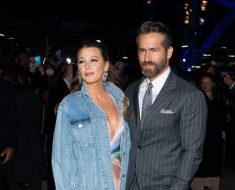I have a bone to pick with you, dear parents who insist on decking out your little girls in the sexist and arbitrary gender marker of our time: the baby headband.
Picture it: You’re in a park, and it’s a beautiful spring day. You’re meeting your friend’s baby for the first time. Here they come. The baby is unpacked from its wrap carrier and you see an adorable T-shirt with many green dinosaurs printed on it. You smile at Baby’s smile and round bald baby head.
“Hey pal! I like your dinosaurs!” you say.
Now, let’s back it up. Same scenario. You’re living your best life on a picnic blanket and here is your friend and your new little friend. Dinosaur T-shirt, gray pants. But on top of baby’s head is a big ol’ flower, secured with a frilly piece of elasticized lace.
A baby headband. One of late-stage capitalism’s greatest offenses against babies.
Okay, disclaimer: This isn’t intended as personal attack on any individual parent. It’s a rumination on female adornment, gender signification and sexism. If you, reader, have placed a gender-signifying head accessory on your baby, please don’t leave. Let’s talk about this. You’re not bad. Your baby looks nice. I know, your mother-in-law bought it. It’s not your fault.
Much of the time, babies do actually need to wear something on their heads. After all, they just left their tailor-made full-immersion spa aka uterus only to be thrust into this harsh chill breeze. Plus, their heads are proportionally larger than adult heads, and as a result, they lose more heat when it’s chilly outside. (Science!) And when it’s super sunny out, a bucket hat will ensure baby is sun protected and looking super fly.
However.

Baby headbands serve a single purpose — and that is not to keep the kid’s head warm or their skull plates together. Scrolling through parenting websites, it becomes clear that moms turn to the band simply so there is no confusion about their baby’s assigned sex. And you can understand why; after all, the first question expecting parents get is “is it a boy or a girl?” Hell, the number-one question I while walking my dog is whether it’s a boy or girl. Heaven forbid there be confusion about a baby’s sex, or a mislabeling!
Why though? If we believe in the equality of the sexes, why does it bother us so much that our baby girl might look like or be mistaken for a baby boy? Or that our little mister might be confused for a little miss?
If baby headbands were merely cute or aesthetically pleasing decor for an otherwise disconcertingly large head, we would put them on boys, too. But the truth of the matter is we don’t put hardly anything on boys. There’s no equivalent accessory for baby “boys” because boys don’t need a special signifier — boys are the default. Boys exist; girls are adorned. Boys are dressed; girls are accessorized. It has become more common for all babies to be coded as strong, smart and sporty through their clothing. But it’s one-directional. Girl-babies wear sporty outfits and shirts that have dinosaurs or space on them. How often do you see someone put a boy-baby in a dress, or in pink or purple, or in pants with unicorns on them?
Someone out there is probably saying, look, the world is basically a trash fire, certainly a girly foofy headband is not a big deal. And you’re right, baby headbands is far down the list of Terrible Things, far below wearing backpacks on the subway and slightly above fighting with Alexa to make her understand you. Luckily for us all, a headband-wearing baby will still one day self-actualize to express their gender and sexuality however they please.
But while these nods to gender seem small, they have an effect. Babies are learning about our world every moment of their lives. Through intense and frankly unnecessary early gendering, what are we teaching them about what a “girl” is? What a “boy” isn’t? Who they are? Who they are expected to be? Because what is a headband on a five-month-old exactly, if not an early signal of a future expectation of performative femininity?
Source: Read Full Article





